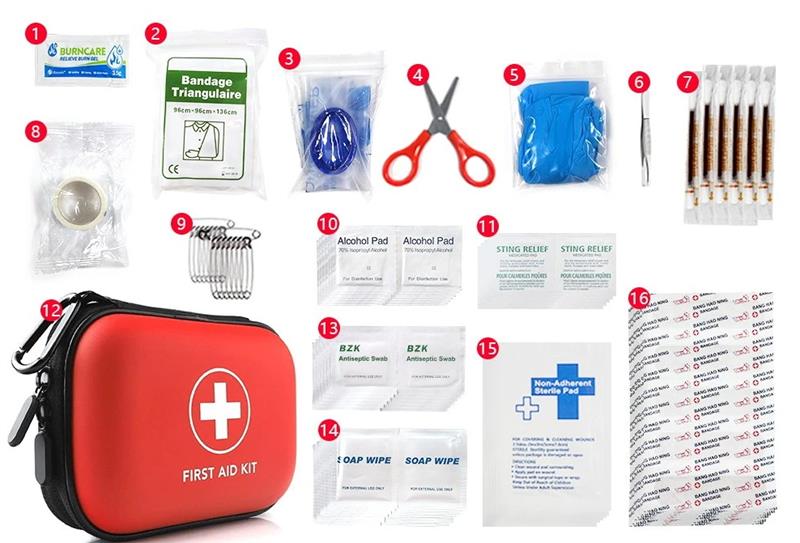What Is A First Aid Kit
Emergency First Aid Kits:
Compact kits are equipped with essential medical supplies, including medications and sterile bandages, designed for immediate use in unforeseen situations.
They are categorized based on their intended users, such as home first aid kits, outdoor emergency kits, automotive first aid kits, earthquake preparedness kits, and more.
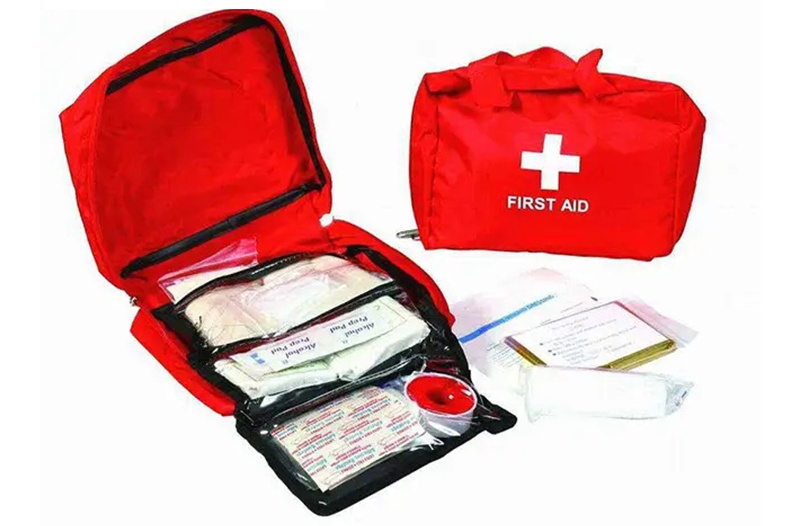
Product Overview:
First Aid Kit
Material: EVA Case/PU/1680d Nylon/600d Polyester
Color: Red, blue, black or Customized
Application: Travel, Hospital, Factory, Office, Home, Outdoor
Feature: Waterproof, shockproof, pressure resistant, environmentally friendly
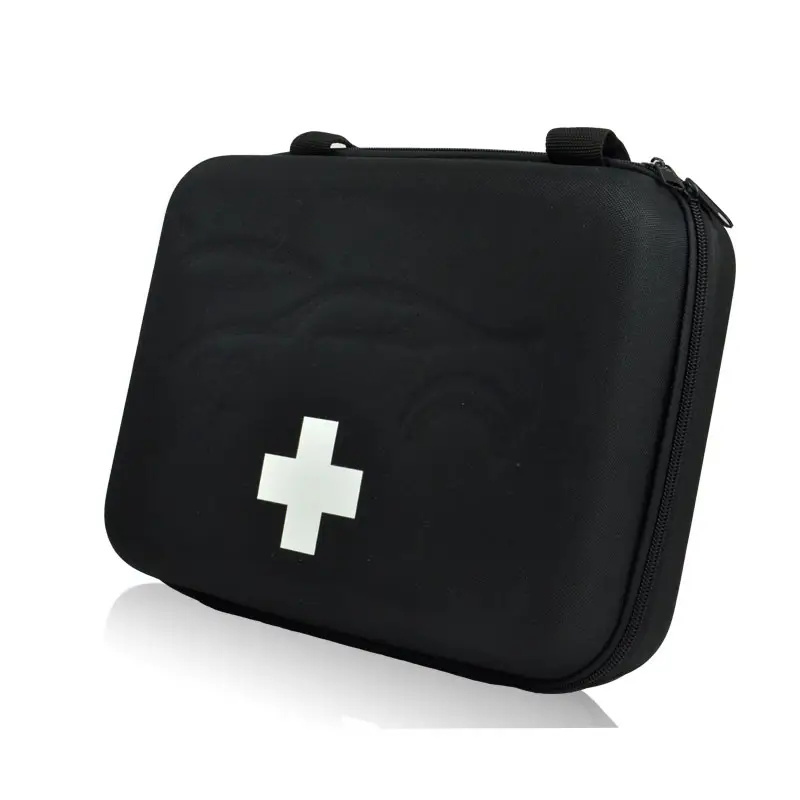
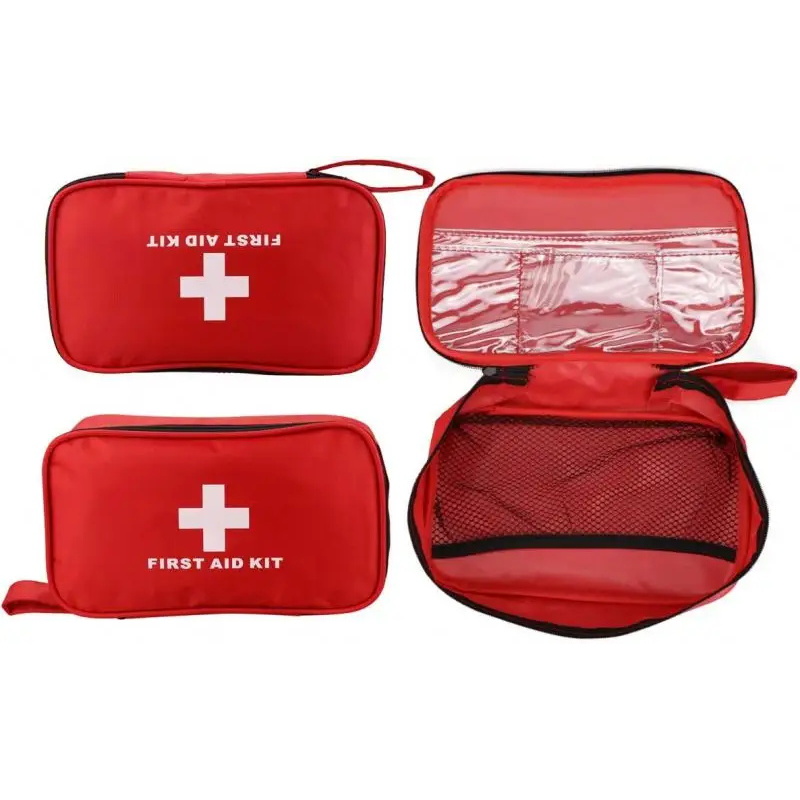
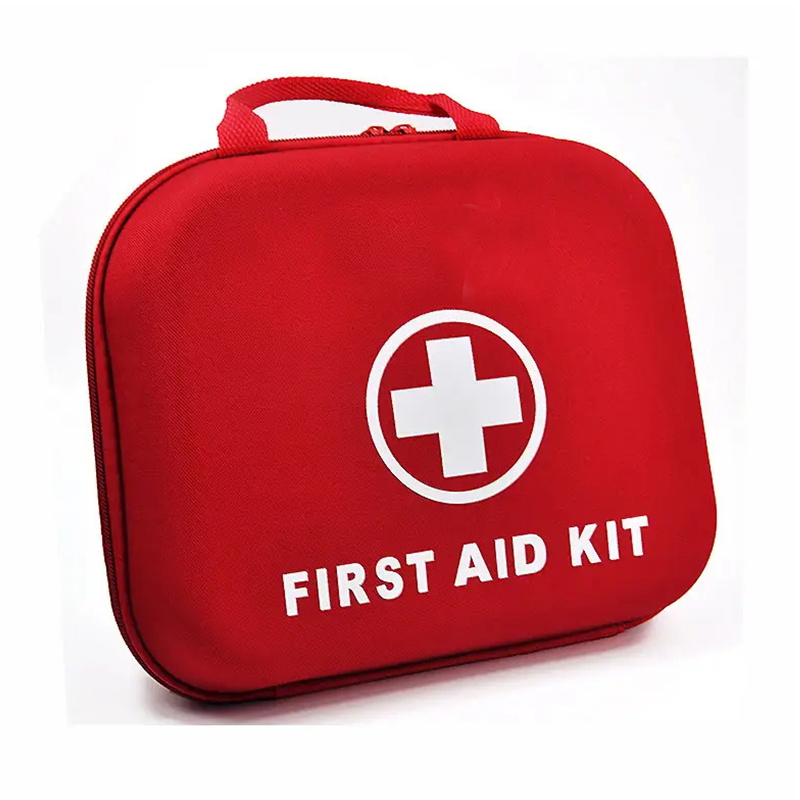
The first aid kit mainly includes escape tools, medical emergency supplies, personal protective equipment, emergency items, and emergency tools.
These setups are designed to meet the common needs of home first aid, such as treating minor injuries, stopping bleeding, bandaging, and providing daily care.
Get Solution
What First Aid Kit Should Contain?
A well-prepared first aid kit typically includes essential items such as a first aid manual, alcohol pads, iodophor cotton swabs, a thermometer, medical gauze, medical bandages, rubber tourniquet, scissors, medical tape, disposable medical gloves, and a respiratory mask.
These supplies are crucial for addressing common injuries and medical situations. Users can also customize their kits by adding commonly used medications like cold and flu remedies, pain relievers, and antibiotics.
Additionally, consider including items such as antiseptic wipes, adhesive bandages, and instant cold packs to further enhance your first aid kit’s versatility and effectiveness.




Application Of First Aid Kit
A compact bag that’s perfect for carrying with you wherever you go. It’s suitable for keeping in your car, attaching to your everyday backpack, or stashing in a drawer at home – versatile for both indoor and outdoor use!
Alcohol Wipes x4:
Alcohol wipes are simple to use; just tear open the packaging. During the pandemic, they’ve played a crucial role in disinfecting everyday items at home and on the go.
Adhesive Bandages (PE, Elastic):
Ideal for minor bleeding from acute small wounds, especially those with clean cuts that are shallow and don’t require stitching.
Adhesive Tape x1:
This is commonly used to secure dressings in place without direct contact with the wound.
Iodine Disinfectant Swabs:
Perfect for disinfecting small skin abrasions, cuts, or burns, especially useful during outdoor activities for minor scrapes and scratches.
Elastic Bandage x1:
Useful for stabilizing and supporting injuries, particularly around joints or areas where adhesive bandages or tape may not work effectively. It can also help reduce localized swelling.
Medical Gauze Pads:
These are primarily used for wound dressing and to control bleeding.
Rubber Tourniquet:
Quickly and effectively controls external bleeding, reducing blood loss and the risk of shock.
Scissors, Dressing Tweezers, and Safety Pins:
These tools are essential for securing and managing dressings and bandages.
This comprehensive kit is designed for on-the-go and at-home use, ensuring you’re prepared for minor injuries and emergencies.
Our team
Why Choose Us
Unparalleled Expertise: With 20+ years of experience in the medical consumables industry, we bring unmatched expertise to every aspect of our products, ensuring the highest quality standards.
Comprehensive Range: Our commitment goes beyond just first aid kits; we specialize in a wide range of medical consumables. From emergency kits to medical supplies, we’re your one-stop solution.
Tailored Solutions: We understand that one size doesn’t fit all. We offer customizable options, so your first aid kit or medical consumables suit your unique needs precisely.


OUR COMPANY
Teamwork Makes The Dream Work
We boast advanced production machinery and techniques, an integrated supply chain, and ample production capacity to ensure timely order fulfillment for our customers.
Furthermore, we take pride in our global reach, supplying over 1,000 types of medical consumables to more than 100 countries worldwide.

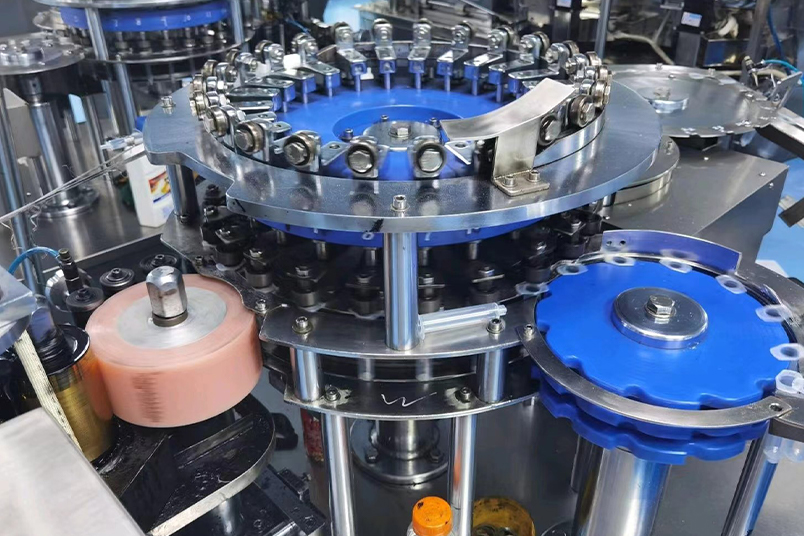

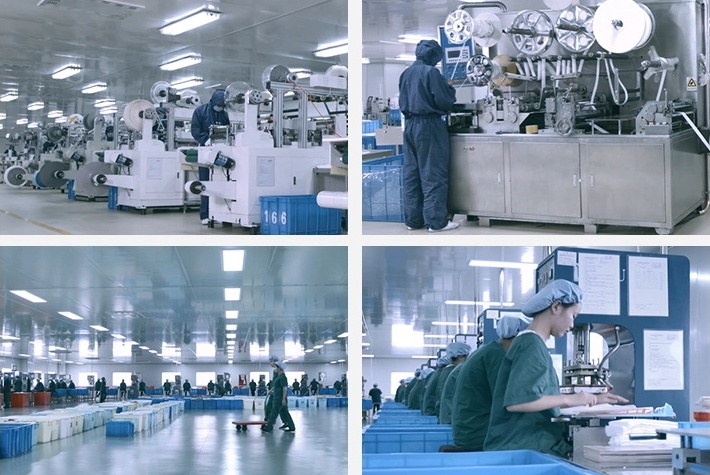
Common Questions
Most Popular Questions.
Frequently Asked Questions (FAQ) about First Aid Kits and First Aid Knowledge
A basic kit should contain adhesive bandages, sterile gauze, adhesive tape, antiseptic wipes, scissors, tweezers, gloves, and pain relievers like ibuprofen.
Check your kit every 3-6 months. Replace expired items promptly to ensure the effectiveness of your supplies.
Advanced kits include additional items like CPR masks, instant cold packs, splints, and a wider variety of dressings and bandages.
Absolutely! You can personalize your kit by adding items such as allergy medication, prescription medications, or specific medical supplies for chronic conditions.
Begin chest compressions by pushing hard and fast (at least 2 inches deep and at a rate of 100-120 compressions per minute) on the center of the chest.
Clean the wound with mild soap and water, apply an antiseptic to prevent infection, and cover it with a sterile non-stick bandage.
For minor burns, run cool water over the affected area for at least 10 minutes and cover it with a clean, non-stick bandage.
Call 911 or seek medical help immediately for severe bleeding, unconsciousness, chest pain, difficulty breathing, or major injuries.
Keep the victim still, remove tight clothing or jewelry, immobilize the affected limb, and seek immediate medical attention.
Remove the stinger if present, clean the area with soap and water, apply a cold compress, and consider taking antihistamines for swelling and itching relief.
First Aid Kit
We would love to hear from you.
Get in touch
Leave us a message
To Get The Latest Medical Consumables Solutions
20 Things You Need To Know About First Aid
Getting Sand in Your Eyes
If sand gets into your eyes, avoid rubbing them. Instead, use a clean tissue or towel to wipe your eyes. Open your eyes and have someone help you check for any foreign objects on your eyelids, in the white of your eye, under your lower eyelid, or on the cornea. If an object is found on the eyelid or white of the eye, you can use a cotton swab dipped in antibiotic eye drops to remove it. If the object is deeper or on the cornea, seek immediate medical attention.
Hypoglycemia
For mild low blood sugar when the person is alert, have them eat a small amount of candy or a biscuit, or drink half a cup of sugary water to relieve symptoms. If these methods don’t work or the person loses consciousness, seek immediate medical help.
Nosebleeds
When experiencing a nosebleed, avoid tilting your head back, as it can cause blood to flow into the mouth and airway. Instead, pinch both sides of your nostrils with your fingers for 4-8 minutes, or use cotton balls soaked in ice water to plug your nostrils to stop the bleeding. If bleeding persists, seek immediate medical attention.
Heat Stroke
If someone has a mild to moderate heat stroke, quickly move them to a cool and ventilated area. Remove or loosen their clothing, and use a cold towel to cool them down. You can also have them drink some cool, salted water or salt-containing beverages. If the person becomes disoriented or experiences seizures, seek immediate medical attention.
Sunburn
During hot summer days, take precautions like using sunscreen and shading yourself with an umbrella. If you get sunburned, the fastest and most effective method is to apply ice. Rinse the sunburned area with cold water, then wrap ice cubes in a towel and apply it to the affected area until the skin feels comfortable. If sunburn is severe with large blisters, avoid popping them and seek medical attention to prevent infection.
Leg Cramps
While Swimming If you’re not far from the poolside, sit on the edge and stretch your cramped leg, pulling your toes towards your body while pushing your knee down. If you’re far from the edge, take a deep breath, float on your back, and use your opposite hand to pull your toes towards your body while pushing down on your knee. Once relieved, return to the poolside and continue to massage and stretch.
Toothache
Rinse your mouth with salt water several times. You can also rub the area with your finger or use a cloth to apply pressure to the sore spot. If the pain is due to an abscess, you can apply a cold pack to your cheek.
Knife Wound
For small, clean wounds with minimal bleeding where the injured finger can still move, use medical iodine to disinfect the wound and surrounding skin, then cover it with sterile gauze or a band-aid. If the wound is large or deep, apply pressure to control bleeding and seek immediate medical attention.
Burns
Immediately place the burned area under running cold water or use a cold, damp towel to cool it down. Wrap the area with gauze or a bandage, but avoid using ice, as it can damage the already injured skin. Do not pop blisters to prevent scarring, and refrain from applying antibiotic ointments or creams unless directed by a healthcare professional.
Sprained Ankle
Within the first 24 hours of a sprain, apply an ice pack for about 30 minutes every hour. Elevate the injured area and rest with a wrap or compression bandage. After 24 hours, switch to warm compresses to improve blood circulation.
Choking on Foreign Objects
Stand behind the person and use both arms to encircle their waist. Place one clenched fist just above their navel and the other hand over the fist. Perform quick inward and upward thrusts to create a forceful airflow that can dislodge the obstructing object. Repeat until the airway is clear.
Fractures
If a fracture is suspected, immobilize the injured limb (or finger) and seek medical attention immediately. Keeping the broken ends from moving will prevent further damage.
Food Poisoning
If food was consumed within the last 1-2 hours, induce vomiting by stimulating the back of the throat with a finger or chopstick and then drink plenty of water to dilute toxins. If food poisoning is suspected from spoiled seafood, consume 100ml of vinegar diluted in 200ml of water to help alleviate symptoms.
Electrical Shock
Quickly cut off the power source by shutting off the circuit breaker or unplugging the device. Use non-conductive materials like wooden sticks, rubber, or clothing to move the person away from the electrical source. Do not touch the person directly if they are still in contact with live wires or equipment.
Bites from Cats or Dogs
Apply a tourniquet above the wound to prevent or minimize the spread of viruses through the bloodstream. Clean the wound promptly with clean water or soapy water. Seek immediate medical attention and consider rabies and tetanus shots within 24 hours.
Carbon Monoxide Poisoning
If you suspect a gas leak, immediately turn off the gas source and open windows for ventilation. Before entering a room filled with gas, breathe fresh air to avoid poisoning. Use a damp cloth or handkerchief to cover your nose and mouth. Do not use lights, doorbells, phones, or any sources of open flame until the gas dissipates. Move the affected person to a well-ventilated area and loosen their clothing.
Alcohol Poisoning
For mild alcohol poisoning, stimulate the gag reflex by using a finger or chopstick to induce vomiting (not suitable for unconscious individuals). Keep the person resting in bed, keep them warm, and prevent vomit from blocking the airway. Monitor their breathing and pulse; if there are no complications, they should recover after a night’s rest.
Drowning
Even if someone knows how to swim, they should not approach a drowning person without proper equipment. After rescuing a drowning person, immediately check their breathing and pulse. If they’ve stopped breathing, provide mouth-to-mouth resuscitation. If they regain consciousness, help them expel water by pressing on their abdomen or having them bend forward while supporting their back.
Cardiac Arrest
Start by tapping the person’s shoulder and shouting loudly to see if they respond. If there’s no response, place them flat on a firm surface, tilt their chin upward, and use both hands to apply compressions to their chest. The depth should be about 5-6 centimeters, at a rate of 100-120 compressions per minute, ensuring the chest fully recoils between compressions.
Artificial Respiration
Clear the person’s mouth and nose of any foreign objects such as vomit, mucus, or blood. Tilt their head backward and use your thumb and forefinger to hold their nostrils closed while ensuring their airway is open. Seal your lips around theirs and give a gentle, steady breath.
